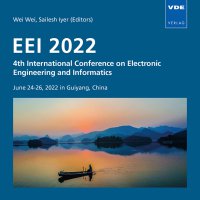Nano TiO2 Hydrophilic Self-Cleaning Coatings
Conference: EEI 2022 - 4th International Conference on Electronic Engineering and Informatics
06/24/2022 - 06/26/2022 at Guiyang, China
Proceedings: EEI 2022
Pages: 6Language: englishTyp: PDF
Authors:
Dou, Hongyu (School of Mechanical and Manufacturing Engineering at UNSW Sydney, University of New South Wales (UNSW), Sydney, Australia)
Abstract:
Nano TiO2 hydrophilic self-cleaning coatings have been widely researched and developed in recent years, which can significantly degrade various organic and inorganic contaminants adhered to the surface due to the solid photocatalytic property of TiO2. This coating can dramatically reduce the cost of labouring and maintenance and positively impact the environment, which can be widely utilized in various fields like construction, vehicle, and solar energy industries. This paper reviewed the mechanism of the photocatalytic reaction of nano TiO2 hydrophilic self-cleaning coatings that can degrade the dirt on the surface of the substrates and put forward an explanation of the principles of three typical preparation methods in detail, including photosensitive sol-gel, hydrothermal, and atmospheric pressure plasma enhanced CVD (AP-PECVD). In addition, it not only highlighted the applications of these coatings, including photocatalytic TiO2 hydrophilic self-cleaning coatings, antireflective TiO2 super-hydrophilic self-cleaning coatings, and antifogging TiO2 super-hydrophilic self-cleaning coatings with some examples of commercialized products like tiles, construction materials, glass, and solar panels, but also evaluated and discussed some challenges of these nanocoatings like the adhesion problem, TiO2 photocatalytic performance, durability, and some preparation problems with relevant potential solutions.


